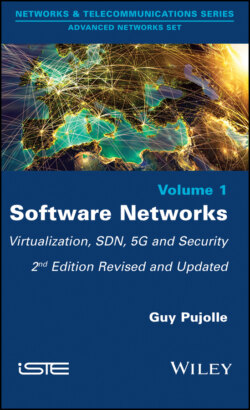Читать книгу Software Networks - Guy Pujolle - Страница 25
2.1. The objective
ОглавлениеThe objective of SDN (Software-Defined Networking) is to reduce costs by virtualization, automation and simplification. For this purpose, SDN facilitates the customization of the networks, a very short set-up time and a network deployment with the right quality of service rather than a general quality of service.
The architecture of SDN can be summarized with three fundamental principles, as shown in Figure 2.1. The first is the decoupling of the physical and virtual layers (hardware and software). This enables virtual devices to be loaded on hardware machines provided, of course, that these hardware machines can host a hypervisor or containers. The second principle is going from a hardware to a logical aspect. This new environment enables us to spontaneously change the network by adding a new network or by taking a network away as much as we want. Finally, the third principle is that of automation – the best possible automation – of the operations carried out on the network, whether for management or for control. This automation is obtained thanks to centralization.
The storage, processing and the network use virtual machines associated with each of these domains that share the hardware resources. We can equally find three types of virtual machines on the same server. In order for the environment to be able to be executed without problems, we must add security, management and control virtual machines. Today, a company needs to have all five of these groups of virtual machines set up in order to constitute an operational information system. These five domains are shown in Figure 2.2.
Figure 2.1. The three basic principles. For a color version of the figure, see www.iste.co.uk/pujolle/software2.zip
Figure 2.2. The five domains necessary for the life of a company
The five domains described above can be put in place by way of virtual machines associated with each of the domains. The whole computing environment of a company can thus be concentrated in the Cloud in the form of virtual machines distributed in datacenters. This environment is illustrated in Figure 2.3 by datacenters containing the virtual machines necessary for the construction of the company’s computing system.
Figure 2.3. Virtualization of the five domains
In addition to this environment, there are applications that may be of two types: business applications and applications to control or orchestrate the environment itself. The search for new products has therefore turned towards autopilot systems, which are also referred to as orchestrators in the literature. The complete environment, which is vital to the functioning of a company, is shown in Figure 2.4, which shows the importance of the orchestrator in the general architecture of informational and operational systems.
Figure 2.4. The pilot program
